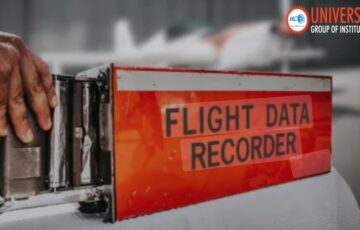DNA Sampling in Disaster Victim Identification
DNA Sampling in Disaster Victim Identification
Introduction
The 2025 Ahmedabad Air India crash, a tragic man-made disaster, claimed 270 lives and rendered many victims unrecognizable, highlighting the indispensable role of DNA sampling in disaster victim identification (DVI). This crime disaster scenario underscores the critical nature of the identification process in various catastrophic events, including terrorism disasters and natural calamities. The complexity of victim identification is further amplified in mass disaster situations, such as earthquakes or large-scale accidents. DNA sampling, or Deoxyribonucleic Acid analysis, serves as the ultimate biometric data, offering a viable means of body identification when all other methods fail. Understanding the DVI meaning and process is crucial for effective disaster response protocols, including the creation and maintenance of a comprehensive disaster victim database. The INTERPOL DVI guide provides international standards for such procedures, ensuring consistency in victim identification across borders.
1. Sample Collection: Securing Genetic Archives
Forensic teams focus on hard tissues—particularly bone fragments and teeth—because they best preserve DNA under extreme conditions such as high heat, impact, and water exposure. Various DNA sampling techniques are employed to ensure the collection of viable genetic material for forensic DNA analysis, forming a crucial part of victim recovery procedures. This approach is equally effective for identifying flood victims or those involved in a mass disaster, where environmental factors can significantly complicate the identification process.
- Bone fragments provide dense cortical material that resists environmental degradation and retains genetic material, even in cases of severe DNA degradation.
- Teeth protect dental pulp within enamel, yielding high-quality DNA even after prolonged exposure to adverse conditions.
- Hair shafts with intact follicles may serve as supplemental sources when bones and teeth are unavailable.
2. DNA Extraction: Unveiling the Blueprint
Extraction transforms raw biological material into purified DNA ready for analysis, with a focus on maintaining optimal DNA quality throughout the process. This step is critical in the overall identification process, ensuring that subsequent stages have the best possible genetic material to work with.
- Mechanical processing involves pulverizing victim remains into a fine powder using sterilized equipment to maximize surface area.
- Chemical digestion employs proteinase K and lysis buffers to break down cellular components and release DNA into solution.
- Purification through silica-based spin columns or magnetic beads captures DNA while eliminating inhibitors and contaminants.
3. PCR Amplification: Genetic Photocopying
The Polymerase Chain Reaction (PCR) exponentially replicates trace DNA fragments into millions of copies, enabling reliable analysis even from degraded samples. The PCR amplification process is crucial for successful DNA profiling in disaster victim identification, involving precise quantification of genetic material.
- Thermal cycling consists of denaturation at ~95 °C, primer annealing below 60 °C, and extension at ~72 °C to synthesize new DNA strands.
- Multiplex PCR techniques allow simultaneous amplification of multiple Short Tandem Repeat (STR) loci, streamlining the workflow and conserving sample material.
4. STR Profiling: Crafting a Genetic Barcode
Short Tandem Repeats (STRs) are highly polymorphic, non-coding DNA regions used as individual barcodes for identification. STR profiling methods are essential for creating unique genetic profiles, forming the basis of DNA typing in forensic genetics. STR analysis is a cornerstone of the identification process, providing highly discriminative results.
- Standard forensic panels analyze 20–24 STR loci, providing discrimination power exceeding one in a billion.
- Capillary electrophoresis with fluorescent primers separates alleles by size, generating a unique genetic profile for each individual.
- These genetic markers for identification form the basis of DNA profiling in forensic genetics, requiring expert DNA profile interpretation.
5. Kinship Matching: Confirming Identity
Family reference samples establish a comparative database to verify identities. DNA matching and kinship matching algorithms play a crucial role in this process, often combining ante-mortem data with post-mortem samples for accurate identification. This stage may also involve cross-referencing with the national ID of victims when available, enhancing the reliability of the identification.
- Buccal swabs or saliva kits collect DNA from close relatives, creating a reference profile.
- Statistical analysis and algorithms calculate likelihood ratios based on allele sharing; a full match across all loci confirms identity.
- Extended kinship testing and mitochondrial DNA analysis address cases where close relatives are unavailable.
- In some cases, the national ID of victims can provide additional confirmation or help narrow down potential matches, especially when DNA results are inconclusive or need further verification.
Turnaround Time & Family Closure
Modern forensic laboratories can complete the entire DNA identification workflow—from sample receipt to reporting—in as little as 36–72 hours, providing critical closure for grieving families. This rapid turnaround is especially important in mass casualty incidents where efficient victim recovery and identification are paramount. The identification success rates have significantly improved with advancements in DNA technology and analysis techniques. A victim identification example from recent flood disasters demonstrates how this streamlined process can bring closure to families within days, even in challenging environmental conditions.
Relevance for UPSC Aspirants
- Disaster Management: Knowledge of Disaster Victim Identification (DVI) protocols under NDMA guidelines enhances administrative preparedness during crises. Understanding the phases of disaster management, including victim identification, is crucial for effective disaster response, whether dealing with natural calamities, a terrorism disaster, or other man-made disasters.
- Legal Framework: Understanding the DNA Technology (Use and Application) Regulation Bill, 2022, is essential for ethical governance and data privacy in forensic science, including the management of DNA databases. This knowledge is particularly relevant when considering the use of national ID of victims in the identification process, as it raises important questions about data protection and privacy rights in disaster scenarios.
- Science & Technology: Mastery of PCR and STR methodologies aligns with GS Paper III topics, reflecting India’s advancing capabilities in biotechnology and forensic applications, including post-mortem identification techniques. Familiarity with statistical analysis in DNA profiling is also crucial for comprehending the scientific basis of victim identification.
“When all else fails, DNA tells the true story of who we are.” This statement encapsulates the power of DNA analysis in disaster victim identification, underscoring its importance in bringing closure to families and communities affected by both natural and man-made catastrophes, including terrorism disasters and mass disasters.








